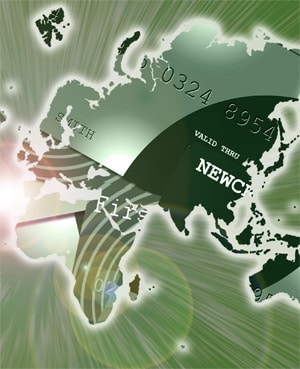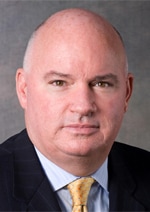CARD TRICKS
By Denise Bedell
Advanced card solutions are helping companies extend working capital cycles while improving suppliers’ cash flow.

The drive to automate payments has been a long-term trend, pushed further by the global financial crisis and the need to make best use of available cash. New payments solutions for corporate cards are helping companies to do just that. Treasurers want to gain greater control and insight into payments and cash management operations.
Tim Brew, business development director at Logica, notes: “Having multiple siloed systems can make it difficult to build an accurate picture of payments patterns and find opportunities to optimize cash in the business.” Hence the drive to automate and electronify payments.
Some of the greatest working capital benefits are being seen on the supplier payments side, for low-value payments. Companies are not only electronifying more payment streams, but they are making use of a wider array of payment channels—most notably corporate cards.
Virtual—and physical—card solutions are being embedded into broader payables solutions by banks, and companies are seeing the benefits. Companies already using cards for travel and expenses are looking to move other processes onto cards as well.They are increasing the size of transaction for which cards can be used and taking advantage of the broad range of card solutions that their banks can offer.
For example, in the procurement function P-card (purchasing or procurement card) usage is growing exponentially, and programs are going global, according to Kevin Phalen, managing director, head of global card and comprehensive payables, Bank of America Merrill Lynch. “This is in part being driven by government adoption of P-cards. For example, Australia, Canada, the UK, Singapore and Hong Kong all have adopted P-cards solutions for vendor payments,” he says.
And companies are looking far beyond procurement. For large-scale meetings and events companies are using a project-specific card to pay all related expenses, along with travel expenses. For particular payments categories—such as claims settlement or rewards programs—cards make eminent sense and corporate uptake has skyrocketed.
Historically, companies have been hesitant to make larger payments via card, as doing so moves control processes from pre-factor—knowing beforehand when the payment will go through—to post-factor—finding out after the fact when a payment has cleared. But companies are now recognizing that the benefits in extended float and increased available working capital outweigh the control concern. And workflow around card payments—such as increased signatories—can be built in or single-use prepaid cards assigned to give pre-factor control.
 |
|
Phalen, Bank of America Merrill Lynch: Clients want transparency and visibility into their cash positions |
DPO EXTENSION AT RAYTHEON
US defense contracting company Raytheon has increased its average days payables outstanding (DPO) and improved payments visibility by moving to an e-payables solution from Bank of America Merrill Lynch. In addition to traditional payment options, the company now offers suppliers the opportunity to be paid either via ACH (automated clearing house payments) or via credit card. Although the majority of suppliers in the e-payables program make use of the ACH option, the credit card piece is where Raytheon sees the greatest advantage.
Veronica Quon, business optimization, Finance Shared Services at Raytheon, explains: “The credit card activity, from a numbers perspective, has increased our monthly accounts payable balance by over $30 million and more than a day of DPO.” Raytheon gets the extended float for credit card settlement, and suppliers using the card program also get a cash flow advantage—with accelerated payments.
Rene Noriega, business optimization lead at Raytheon, notes: “In the beginning we stumbled somewhat in developing a cohesive adoption strategy. If we offered a credit card payment as well as ACH with the same payment terms, we risked suppliers taking advantage of ACH and dismissing credit card due to the inherent fee associated with credit card processing.”
If suppliers are getting the same payment date with either option they will naturally take the less expensive option. “What we decided was to give them the option of ACH in standard terms—30 days—or credit card with an accelerated payment,” Noriega adds. “This allows us to go in with a full menu of options at the same time and give them a choice, simplifying the overall adoption process.”
 |
|
Kohli, Citi: Cards have moved beyond just a settlement solution and found their real home as a data solution |
The biggest challenge has been in reconciling credit card payments issued to the supplier against the actual payments taken by them, notes Quon. Unlike a check or ACH payment—which is deposited in its entirety into a supplier’s bank account, the credit card allows the supplier to take partial payments. Partial payments result in “uncashed” balances to the supplier, requiring reconciliation. “While most remain in balance, there are some suppliers who perpetually have unreconciled amounts requiring significant effort to resolve,” she says. “We are currently working closely with these suppliers to reconcile and with Bank of America to implement methods to ensure that suppliers take full payments.”
DATA DRIVERS
Another clear benefit of card programs that companies are keen to take advantage of is the amount and depth of spend data that they can get on card transactions. “Clients want to see where their money is being spent and use that data for supplier negotiations,” adds Manish Kohli, managing director, global business head, global commercial cards at Citi.
Kohli says: “Cards have moved much beyond just a settlement solution and have found their real home as a data solution and data business. Companies want this data all on one platform: They want the same level of detail on spend in, say, Bulgaria as they would want on payments made by central treasury in, say, the US.”
THE CHANGING PAYMENTS LANDSCAPE
New regulations, new standards developed for corporate-bank messaging and the changing global economic picture are all having a deep-seated effect on the payments business.
Banks are under pressure to reduce costs, owing to regulations such as SEPA and Basel III, but must still invest to compete—as a result of developments such as UK Faster Payments, Immediate Payments and Payments in Real Time.
Meantime, “economic and political issues around the world are causing corporate concern about bank relationships and access to cash,” notes George Ravich, EVP and CMO of technology firm Fundtech.
“In the current climate, companies want agility should they need to alter banking relationships, and need to have a complete view of their money worldwide and be able to move money quickly,” notes Ravich. They need to be assured that their payments providers are secure, but they also want to be able to switch providers easily should the need arise.
This is pushing more and more companies to look at SWIFT connectivity. And messaging standards, such as the common global implementation framework for ISO 20022 (corporate-to-bank) messaging, are paving the way to give corporates that freedom.
Robert Blair, managing director at J.P. Morgan Treasury Services, says CGI opens the door to true multibank payments and cash management. “The interest here is in providing a multibank experience where clients can use a single set of communication tools to communicate with their entire bank network and gain process efficiency and cash transparency as a result.”



